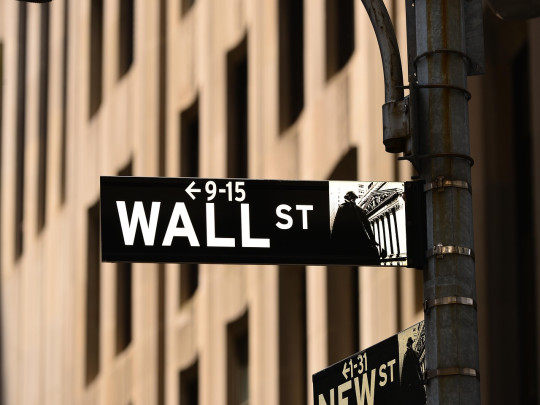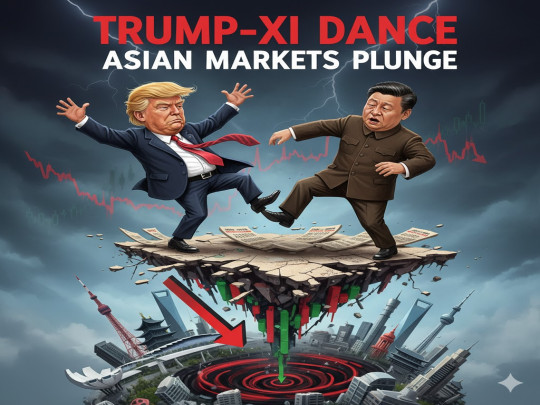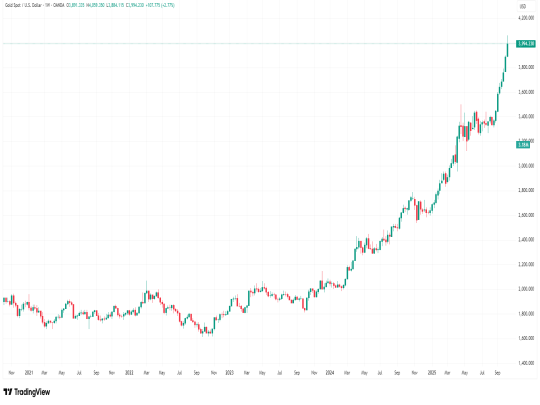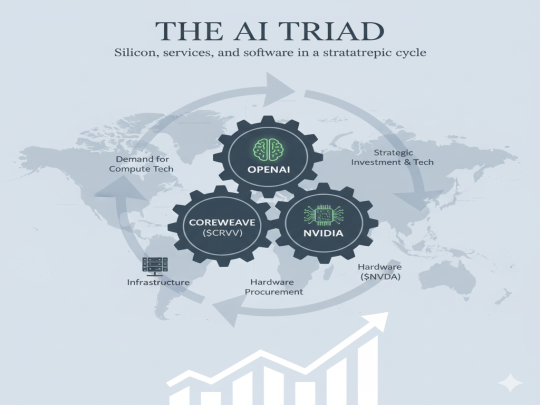Morning Market Brief: Inflation Eases, Nvidia Lead Tech Rally Amid Renewed U.S.-China Trade Tensions
Morning Market Update: Inflation cools, easing pressure on Fed. NVIDIA powers gains in tech stocks. TACO trade gains traction, as Trade War with China complicates. Retail stocks, including GAP under pressure. OPEC remains in focus.

- Early Friday US stock futures declined as renewed US-China trade tensions, sparked by President Trump's accusation of a deal violation and Treasury Secretary Bessent's "stalled" talks comment, overshadowed soft April PCE inflation data.
- Despite Friday's pullback, major indices are poised for solid weekly and monthly gains (S&P +1.9% WTD, +6.2% MTD), driven by earlier trade optimism and tech sector strength.
- Thursday's market closed higher (S&P +0.4%), led by Nvidia (+3%) post-earnings, though an appeals court temporarily reinstated Trump's "reciprocal" tariffs, injecting fresh uncertainty.
- Notable premarket movers Friday included UiPath (+12%) and Ulta Beauty (+9%) surging on strong results/guidance. Gap (-13%), Elastic NV (-10%), and Regeneron/Sanofi (-10%/-4%) fell sharply on guidance or trial results.
- Trade tensions reignited as Trump accused China of violating their recent deal. An appeals court temporarily reinstated Trump's "reciprocal" tariffs. Bessent stated US-China talks were "stalled."
- April US PCE inflation (Fed's preferred gauge) eased to 2.1% YoY, the lowest since Feb 2021, with core PCE at 2.5% YoY. Consumer spending slowed despite strong income growth. Trump met Powell Thursday, again urging rate cuts.
- Retail earnings saw Costco beat Q3 estimates. Gap plunged over 15% post-earnings on a flat sales forecast and a warning of a $100M-$150M potential tariff impact. American Eagle missed Q1 EPS.
- Global markets Friday saw Europe open higher despite slightly hotter German inflation. Asia mostly fell on renewed US trade worries and mixed regional inflation data, including a 15-month high for Tokyo's core CPI.
- US Treasury yields held relatively steady Friday morning (10-yr around 4.44%) as markets balanced soft PCE inflation against fresh trade jitters.
- Gold prices slipped Friday on a stronger dollar. Oil headed for a second weekly loss on OPEC+ supply concerns and US-China trade fears, with the US revoking some export licenses to China. Bitcoin continued its pullback.
- Market sentiment became fragile Friday due to revived US-China trade tensions and tariff legal limbo. The AAII survey showed rising investor pessimism. Month-end rebalancing could add selling pressure. Tech remains a standout performer for May.
The April personal consumption expenditures (PCE) price index — a key inflation gauge closely watched by the Federal Reserve — showed further signs of easing price pressures, potentially giving the Fed more leeway to loosen monetary policy in the months ahead. The PCE price index rose 2.1% year over year, marking its lowest annual increase since February 2021 and a drop from March’s 2.3% reading. On a monthly basis, inflation ticked up just 0.1%, following a flat print in March. The data suggest that inflation is gradually moving toward the Fed’s 2% target, reinforcing hopes for a potential rate cut later this year.
Despite the positive inflation data, U.S. stock futures declined Friday morning as the market reacted to renewed trade tensions between the U.S. and China. President Donald Trump accused China of violating its preliminary trade agreement with the U.S. in a social media post, reviving fears of a prolonged trade war. His comments came on the heels of Treasury Secretary Bessent’s remarks on Fox News that U.S.-China trade talks were “a bit stalled,” adding to investor anxiety and contributing to the dip in futures.
On Thursday, the S&P 500 finished higher, led by strength in Nvidia, though gains were tempered as traders continued to monitor judicial developments around Trump’s controversial “reciprocal” tariffs. A federal appeals court on Thursday granted the Trump administration’s request to temporarily pause a lower-court decision that had struck down most of those tariffs, introducing fresh legal uncertainty into the trade outlook.
Still, despite the late-week turbulence, the major U.S. indexes remain on track to close both the week and the month with solid gains. The S&P 500 is up 1.9% this week, while the Dow Jones Industrial Average has climbed 1.5%. The tech-heavy Nasdaq is leading the charge, up 2.3% for the week. For the month, the S&P 500 has risen 6.2%, the Dow is up 3.8%, and the Nasdaq has surged nearly 10%, reflecting robust investor enthusiasm for tech and AI-linked stocks despite macroeconomic and geopolitical headwinds.
US Market Previous Day:
The S&P 500 closed higher on Thursday, gaining 0.4% to settle at 5,912.17, though it pulled back from its session high after rising as much as 0.9% earlier in the day. The Nasdaq Composite also advanced, finishing up 0.39% at 19,175.87 after climbing as much as 1.5% intraday. The Dow Jones Industrial Average added 117.03 points, or 0.28%, to close at 42,215.73. Despite the intraday volatility, all three major indexes are poised to end both the week and the month in positive territory.
(Source: TradingView.com)
A key driver of Thursday’s gains was Nvidia, which surged more than 3% following its standout quarterly results. The AI and semiconductor bellwether exceeded Wall Street expectations on both revenue and earnings, thanks largely to a 73% year-over-year surge in its data center business. Nvidia’s strong performance helped lift broader tech sentiment and contributed to the Nasdaq’s continued outperformance.
US Futures Remain Flat:
- Dow Jones Industrial Average futures remained flat with decline of 0.2%
- S&P 500 futures showed meagre gains of 0.15%
- Nasdaq Composite futures lead the pack with gains of 0.37%.
Biggest Premarket Movers
UiPath: Shares surged 12% after the automation software company posted first-quarter operating income and revenue figures that exceeded FactSet estimates. UiPath also raised its full-year revenue guidance and provided a strong outlook for its current-quarter revenue, expecting it to be between $345 million and $350 million, while analysts polled by FactSet were anticipating $331.3 million.
Ulta Beauty: The beauty retailer’s shares rallied 9% after the firm raised its annual profit forecast and delivered quarterly results that significantly surpassed expectations. Ulta attributed the strong performance to lower inventory losses and robust demand driven by new product launches, particularly from celebrity-owned brands.
American Eagle: Shares slumped 7% after the clothing retailer reported a fiscal first-quarter adjusted loss of 29 cents per share. This was wider than the LSEG estimate, which had forecast a loss of 22 cents per share. American Eagle’s revenue of $1.09 billion met expectations.
Gap: The apparel retailer plunged 13% after it forecast sales to be flat for its current quarter. This guidance disappointed analysts who had expected growth of 0.2% and overshadowed Gap’s first-quarter earnings and revenue beat.
Elastic NV: Shares stumbled 10% after the American-Dutch software company guided for full-year revenue in the range of $1.655 billion to $1.67 billion. This projection missed the FactSet consensus outlook of $1.68 billion.
Marvell Technology: The chip stock slipped 4% after its first-quarter results came in roughly in line with Wall Street expectations. Adjusted earnings per share were 62 cents, just slightly ahead of the 61-cent LSEG estimate. The muted reaction may be due to the stock having already risen 9% in May leading up to the report.
NetApp: The data infrastructure stock shed 5% after forecasting its fiscal first-quarter adjusted earnings to be in the range of $1.48 to $1.58 per share. This was below the $1.65 per share that analysts polled by FactSet had forecast. The weaker guidance overshadowed NetApp's earnings and revenue beat in its last reported quarter.
Regeneron Pharmaceuticals, Sanofi: Biopharma stocks Regeneron Pharmaceuticals and Sanofi tumbled 10% and 4%, respectively. The declines followed the announcement of mixed results from late-stage trials for itepekimab, a respiratory drug they are jointly developing.
Airbnb: Shares slipped 3% after Truist Securities downgraded the short-term vacation home rental company to a "sell" rating from "hold." Analyst C. Patrick Scholes expressed concern that investors have not fully accounted for potentially soft summer leisure travel trends in both the U.S. and Europe.
PagerDuty: The cloud computing stock fell 5% after PagerDuty forecast that its second-quarter adjusted earnings would come in between 19 cents and 20 cents per share. This was lower than the profit guidance of 23 cents per share that analysts polled by FactSet had anticipated.
Zscaler: Shares rose 6% after the cloud security company topped analysts’ expectations for its fiscal third quarter and raised its full-year earnings and revenue guidance. Zscaler reported adjusted earnings of 84 cents per share in the third quarter, surpassing the FactSet consensus estimate of 76 cents, while revenue of $678 million also exceeded the $666.5 million estimate.
Tariff Update:
President Donald Trump reignited trade tensions on Thursday by accusing China of violating its preliminary trade agreement with the U.S. In a post on Truth Social, Trump declared, “China, perhaps not surprisingly to some, HAS TOTALLY VIOLATED ITS AGREEMENT WITH US. So much for being Mr. NICE GUY!” The accusation came despite the two countries reaching a 90-day suspension on most tariffs on May 12. Stock market futures dipped following the post, as investors grew wary of a potential breakdown in trade negotiations.
At the same time, legal developments around Trump’s tariff strategy added further uncertainty. On Wednesday night, the U.S. Court of International Trade ruled that Trump had overstepped his authority by imposing so-called “reciprocal” tariffs, ordering that the challenged tariff measures be vacated. However, the Trump administration swiftly filed a notice of appeal, and a federal appeals court on Thursday temporarily reinstated the tariffs, granting the administration’s request to pause the lower court’s decision. The White House also signaled it would seek “emergency relief” from the Supreme Court if needed.
The administration is reportedly exploring other legal pathways to maintain or reimpose tariffs. According to The Wall Street Journal, officials are considering invoking the Trade Act of 1974 to implement a new round of duties — potentially up to 15% — for a 150-day period. White House trade advisor Peter Navarro underscored the administration’s resolve, stating, “Even if we lose, we will do it another way.”
Meanwhile, Treasury Secretary Scott Bessent said in a Fox News interview that U.S.-China trade talks are “a bit stalled.” He added there may be a call between Trump and Chinese President Xi Jinping “at some point,” but no timeline was given. Despite the mutual agreement to pause tariffs temporarily, tensions persist, with Washington moving forward with tech restrictions on China, while Beijing has yet to significantly ease its export controls on rare earth elements.
Key Economic Data/News:
Inflation remained muted in April, with tariffs imposed earlier in the month by President Donald Trump not yet making a noticeable impact on consumer prices, according to data released Friday by the Commerce Department. The personal consumption expenditures (PCE) price index — the Federal Reserve’s preferred inflation gauge — rose by just 0.1% for the month, matching consensus estimates. On a year-over-year basis, inflation stood at 2.1%, slightly below the previous month’s reading of 2.3%.
Core PCE, which strips out the volatile food and energy categories and is closely watched by Fed policymakers, also increased 0.1% on the month and 2.5% on the year, with the annual reading just under the expected 2.6%. While price pressures remained subdued, consumer spending decelerated sharply, increasing only 0.2% in April compared to 0.7% in March. Personal income, however, posted a strong 0.8% gain — well above the forecast of 0.3% — suggesting households may have room to spend despite cooling consumption.
President Trump met with Federal Reserve Chair Jerome Powell on Thursday at the White House to discuss economic conditions. According to a statement from the Fed, Powell did not share any policy expectations but emphasized that monetary decisions would remain grounded in economic data and free from political influence. “Chair Powell did not discuss his expectations for monetary policy, except to stress that the path of policy will depend entirely on incoming economic information and what that means for the outlook,” the central bank said.
The meeting came amid ongoing pressure from Trump, who has repeatedly called on the Fed to cut interest rates. White House press secretary Karoline Leavitt confirmed Thursday that Trump used the private meeting to reiterate his view that Powell is “making a mistake” by keeping rates elevated. “The president’s been very vocal about that, both publicly and now I can reveal privately as well,” she told reporters.
While the inflation data may give the Fed some leeway for a future rate cut, officials have remained cautious, insisting on clarity around the economic outlook before adjusting policy. The subdued inflation reading, combined with robust income growth and slowing consumption, leaves policymakers with a mixed picture as they navigate economic uncertainty and intensifying trade developments.
Earnings Season/Company News:
Costco exceeded Wall Street's earnings and revenue forecasts for the third quarter on Thursday, with an 8% increase in sales compared to the same period last year. The membership club was among several retailers that announced quarterly results after the market closed on Thursday. Gap surpassed expectations for both revenue and profit in its first quarter, but its shares dropped over 15% after the company warned that new tariffs could cost between $100 million and $150 million. American Eagle's shares also fell in after-hours trading as the retailer missed first-quarter earnings estimates and provided pessimistic guidance for the second quarter.
Global Market Trends:
European markets moved higher on Friday, with the STOXX 600 climbing 0.3%, supported by gains in oil and gas, healthcare, and utility stocks. Among major regional indices, Germany’s DAX outperformed with a 0.6% rise, putting it on course to snap a two-day losing streak and revisit record highs set earlier in the week. The move comes despite slightly hotter-than-expected inflation data. Germany’s annual inflation rate for May came in at 2.1%, just above the 2.0% estimate, according to preliminary figures from Destatis. Although higher than anticipated, the reading is close to the European Central Bank’s 2% target, reinforcing expectations that the ECB may proceed cautiously with any future policy changes.
In contrast, Asia-Pacific markets mostly retreated on Friday as investor sentiment was dampened by U.S. economic concerns, inflation anxieties, and ongoing uncertainty surrounding President Donald Trump’s reinstated “reciprocal” tariffs. Asian tech stocks were particularly hard hit. Japan’s Nikkei 225 fell 1.22% to 37,965.10, while the broader Topix dipped 0.37% to 2,801.57. A key data point weighing on sentiment was Tokyo’s core inflation reading for April, which rose 3.6% year-over-year — the highest since January 2023.
Elsewhere in Asia, South Korea’s Kospi declined 0.84% to 2,697.67, and the Kosdaq lost 0.26%. Mainland China’s CSI 300 fell 0.48% to 3,840.23, while Hong Kong’s Hang Seng Index slid 1.2% to 23,289.77 amid continued concerns over trade restrictions and tariff reinstatements. Bucking the regional trend, Australia’s S&P/ASX 200 gained 0.3%, closing at 8,434.70.
Debt Market:
U.S. Treasury yields remained relatively stable on Friday as investors digested April’s personal consumption expenditures (PCE) inflation data and the latest legal developments regarding President Trump’s trade tariffs. The benchmark 10-year Treasury yield inched up by 1 basis point to 4.438%, while the 30-year yield added 2 basis points to 4.947%. The 2-year yield held near flat at 3.941%.
The subdued movement in yields reflected market expectations that the Fed may begin easing interest rates later this year, with traders currently pricing in around 50 basis points of rate cuts by year-end, likely starting in October. The lower-than-expected annual PCE reading added to the case for potential easing, though geopolitical and legal uncertainties surrounding trade policy continue to inject caution into rate markets.
Commodities and Other Assets:
Gold prices slipped on Friday as a strengthening U.S. dollar and investor caution ahead of a key inflation report weighed on demand. The dollar index (DXY) rose 0.3% and was on track for a weekly gain, making gold more expensive for holders of other currencies. The cautious sentiment comes as investors await fresh inflation data that could influence the Federal Reserve's monetary policy outlook. Despite hitting multiple record highs earlier this year amid geopolitical tensions and economic uncertainty, gold has faced some consolidation in recent sessions.
Oil prices were also under pressure, on course for a second straight weekly decline. Both Brent and WTI benchmarks have dropped around 1.3% so far this week, driven by concerns over a potential supply increase by OPEC+ in July. The alliance, which includes key producers like Saudi Arabia and Russia, is set to meet Saturday to discuss unwinding voluntary production cuts. JPMorgan analysts noted that the global oil surplus has widened to 2.2 million barrels per day, likely requiring a price correction to realign supply with demand. Meanwhile, recession fears — amplified by renewed U.S.-China trade tensions — have further dampened the demand outlook. In a fresh escalation, Washington revoked export licenses and banned shipments of products like ethane and butane to China, compounding the pressure on global trade flows.
Bitcoin extended its pullback from record highs on Friday, driven by ongoing profit-taking and market unease over President Trump's revived trade tariffs. The leading cryptocurrency is on track for mild weekly losses after briefly surpassing $111,000 last week. Despite positive headlines — including a $500 million Bitcoin purchase by Gamestop and the SEC dropping its lawsuit against Binance — prices remained under pressure. The market appears to be consolidating gains from the recent rally as investors digest both macroeconomic and regulatory developments.
Market Sentiment:
Market sentiment remained fragile as investors grappled with the whiplash effect of President Donald Trump’s shifting tariff policy and its broader economic implications. The on-again, off-again nature of the levies has injected considerable uncertainty into financial markets. Inflation concerns, exacerbated by the potential economic fallout of reinstated tariffs, have already prompted some companies to lower forecasts and flag trade policy as a key risk. The unpredictability — with tariffs seemingly subject to abrupt reversals via political or judicial decisions — complicates international trade negotiations and hinders investors’ ability to allocate capital efficiently.
The impact of this uncertainty was visible in trading behavior. The S&P 500 opened nearly 0.9% higher but reversed sharply after the Trump administration announced it may seek Supreme Court intervention to preserve the contested tariff policy. The volatility underscored investors’ sensitivity to trade headlines and legal developments, which have become increasingly influential market drivers.
Investor pessimism also increased, as highlighted by the latest American Association of Individual Investors (AAII) sentiment survey. Bearish sentiment toward stocks over the next six months rose to 41.9%, up from 36.7% the previous week, and significantly above the 31.0% historical average. Bullish sentiment dropped to 32.9%, below its long-term norm of 37.5% for the 16th time in 17 weeks. When asked what most influenced their outlook, nearly 64% of Main Street investors cited “tariffs, the economy, and/or inflation,” far outweighing other concerns like corporate earnings, valuations, or interest rates.
Adding to the market’s fragility, month-end pension fund rebalancing may exert downward pressure on equities. According to a note from Goldman Sachs’ trading desk, U.S. pension funds are expected to sell approximately $20 billion worth of stocks. The move reflects May’s strong equity performance relative to bonds, which has skewed asset allocations and necessitated adjustments to comply with institutional mandates.
Despite the broader caution, the information technology sector has emerged as a standout performer. S&P 500 tech stocks are on track for their best monthly showing since November 2023, surging around 11% in May. Super Micro Computer and Seagate Technology led the charge with monthly gains exceeding 29%, while Nvidia, Micron, and Broadcom also delivered strong performances. The tech sector’s resilience, driven by AI momentum and robust earnings, continues to anchor broader market gains in an otherwise uncertain environment.



